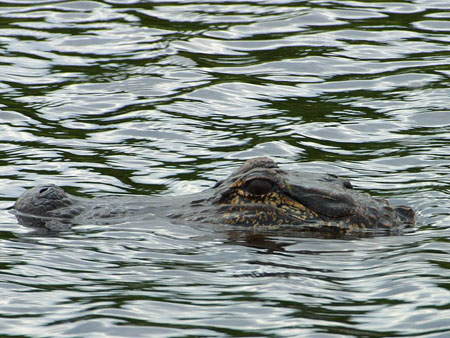
Alligators are indigenous to tropical, swampy environments. Serious attacks on humans are comparatively rare, but never forget that these creatures are territorial, potentially very dangerous and extremely powerful. If an alligator clamps its jaws on to any part of your body it may not let go!
Always approach alligators with caution. They are normally afraid of human beings and back away when approached, but never underestimate their willingness to defend themselves, their territory and particularly their young. If an alligator is heard to hiss, this is generally a warning that you are too close or invading their territory, and the animal feels threatened. It is then wise to back off because they can move very quickly over short distances.
Alligators are often seen bask on banks beside water for prolonged periods. They are generally warming their bodies prior to entering the water. Sometimes they also lie with the mouths agape to lose body heat. If an alligator heads directly towards a human being, the person should regard the animal as a threat. Do not allow an animal behaving in this manner to approach too closely.
Perhaps the most important advice for photographing alligators, apart from safety-related comments, is to find a low viewpoint. Get down on the ground at the level of the alligator so more than the creature's back is visible. The images should then have a more intimate and interesting atmosphere and it should be possible to create an environmental background. If the alligator is swimming, a low viewpoint helps to incorporate any available reflection in the frame. However, always remember that when viewing the animal through a lens it is easy to misjudge its real distance from the camera.
Lenses in the range 100mm to 200mm are appropriate for alligator shots although some photographers use lenses having focal lengths of 50mm or less. A shorter focal length requires a closer approach to the animal and more experience of alligator behaviour to work safely. Overcast days are often produce good images because wet alligator skin can be blown away with highlights in direct sun.






